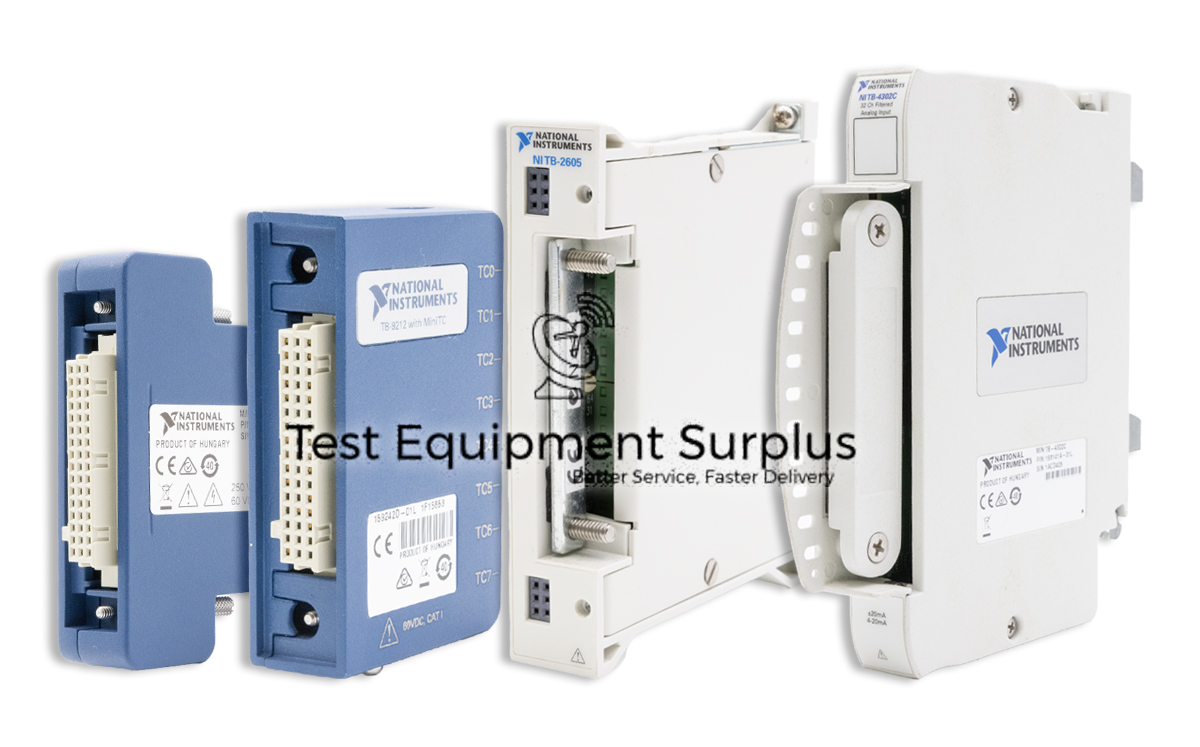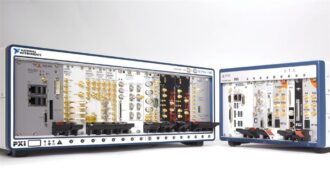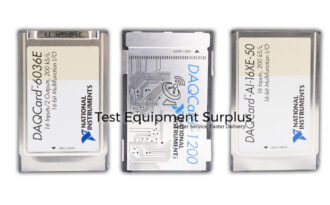Description
The NI TB-4300C Terminal Block, with the part number 194956-03L, is a front mountable terminal block designed to be directly mated with the 8-channel PXIe-4300 Analog Input Module. This terminal block facilitates hot-swapping, allowing for easy deployment and removal within live data acquisition systems. It boasts integrated PFI connections and 8 analog input connections, ensuring a robust and efficient data handling capability.
Additionally, each analog input channel on the TB-4300C features a separate COM terminal. The built-in current sense resistor has a value of 50 Ω, and the terminal block can be configured to handle an input current range from 4 to 20 mA or ±20 mA, providing flexibility for various measurement requirements.
| Specification | Detail |
|---|---|
| Part Number | 194956-03L |
| Product Name | NI TB-4300C Terminal Block |
| Compatibility | 8-channel PXIe-4300 Analog Input Module |
| Mount Type | Front Mountable |
| Connection Type | Direct mating with PXIe-4300 |
| Hot-Swapping Ability | Yes |
| Integrated Connections | PFI connections and 8 analog input connections |
| Separate COM Terminal | Yes, for each analog input channel |
| Current Sense Resistor | 50 Ω |
| Input Current Range | 4 to 20 mA or ±20 mA |
Question 1: What are the key features and capabilities of the NI TB-4300C Terminal Block, part number 194956-03L, when used with the 8-channel PXIe-4300 Analog Input Module?
Answer 1: The NI TB-4300C Terminal Block’s integrated current sense resistor with a value of 50 Ω and its configurable input current range of 4 to 20 mA or ±20 mA contribute to measurement flexibility by allowing it to accommodate different types of current-based measurements, ensuring compatibility with a variety of sensors and signals within data acquisition systems.
Question 2: How does the NI TB-4300C Terminal Block’s integrated current sense resistor value and adjustable input current range contribute to the flexibility in measurement requirements?
Answer 2: The integrated PFI connections on the NI TB-4300C Terminal Block allow for precise timing and digital signal synchronization, which, when combined with the built-in 50 Ω current sense resistor and the configurable input current range of 4 to 20 mA or ±20 mA, enable accurate current measurements and flexible performance for various types of analog input signals within data acquisition systems.
Question 3: What is the function of the integrated PFI connections on the NI TB-4300C Terminal Block and how does its current sense resistor value and input current range contribute to its performance?
Answer 3: The separate COM terminal on each analog input channel of the NI TB-4300C Terminal Block allows for individual grounding for each channel, improving noise immunity and signal integrity, while its ability to handle an input current range from 4 to 20 mA or ±20 mA offers versatility in accommodating various types of current-based measurements, catering to a wide array of industrial sensor and signal types.
Question 4: What is the purpose of the separate COM terminal on each analog input channel of the NI TB-4300C Terminal Block, and how does its current handling capabilities enhance its functionality for different measurement requirements?
Answer 4: The NI TB-4300C Terminal Block, part number 194956-03L, is designed to mate with the 8-channel PXIe-4300 Analog Input Module and offers key features such as hot-swapping functionality, integrated PFI connections, 8 analog input connections with separate COM terminals for each channel, and a built-in current sense resistor valued at 50 Ω, with the capability to configure the input current range from 4 to 20 mA or ±20 mA
Question 5: Considering the features of the NI TB-4300C Terminal Block, what are the capabilities of its PFI connections, and how do these benefit an 8-channel PXIe-4300 Analog Input Module integration?
Answer 5: The NI TB-4300C Terminal Block’s PFI connections provide capabilities for timing and triggering functions, which when integrated with an 8-channel PXIe-4300 Analog Input Module, benefit the system by enabling precise synchronization and event handling across multiple channels, thereby enhancing the module’s data acquisition accuracy and efficiency.




